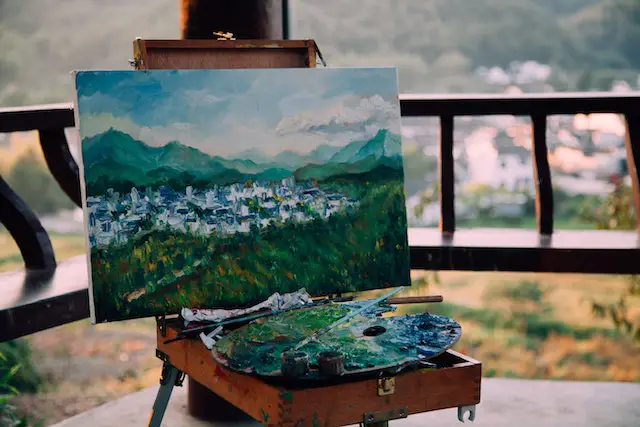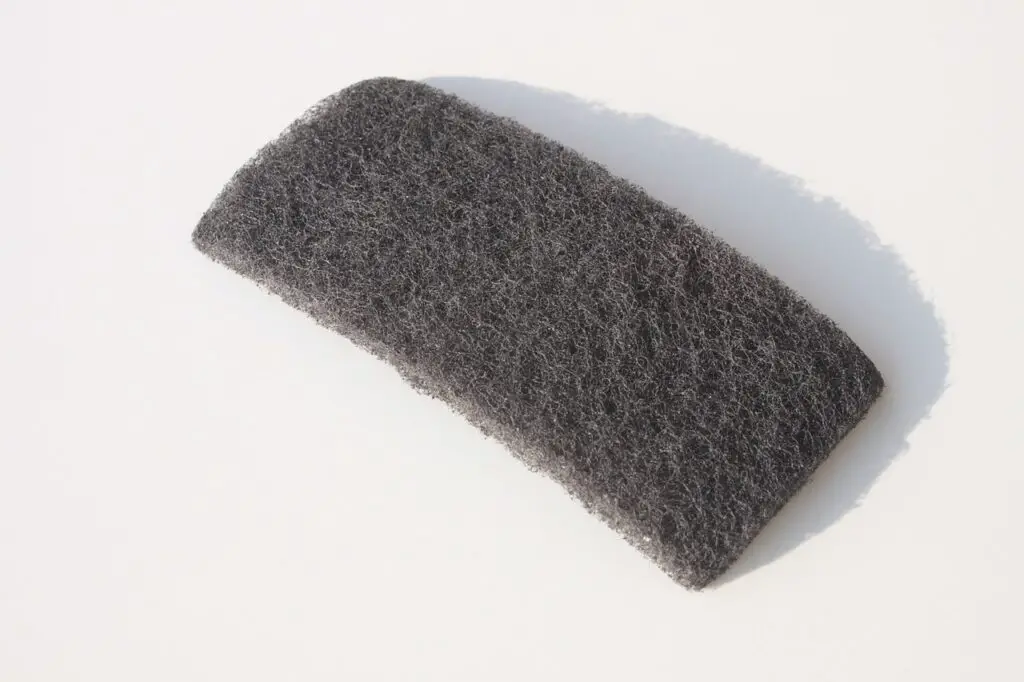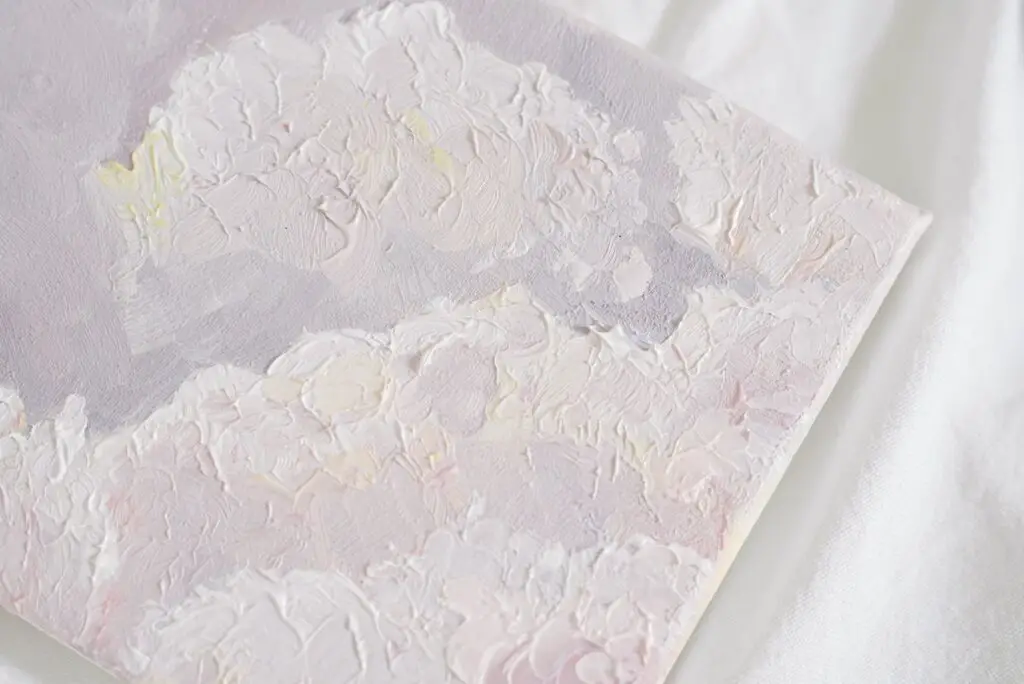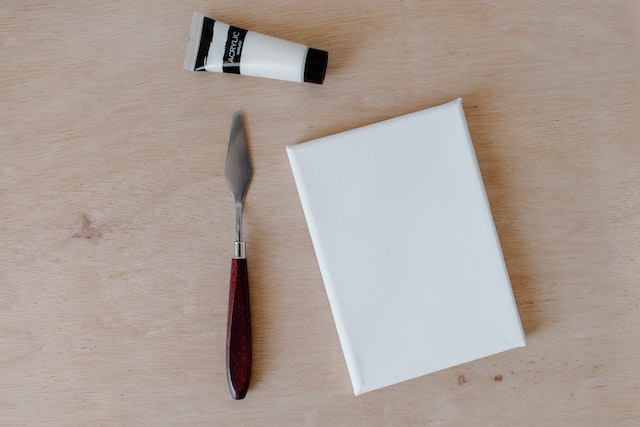We artists get a little impatient when waiting for the gesso to dry. You might wonder how long it will take. I thought of sharing my own experience with gesso drying time as well as of other artists.
In general, the first coat of gesso takes 1 hour and each additional layer takes 20 minutes to dry. The drying time can be increased with high humidity, cold temperatures, low airflow, and painting in thick layers. It is best to paint when gesso is dried overnight.
Gesso can be used as a primer for many types of art mediums and painting supports. The drying time varies depending on environmental factors, art medium, and the thickness of the gesso.
How long does gesso take to dry before painting?
In general, gesso needs to be dry thoroughly or cure overnight before acrylic painting. The longer you let the gesso dry, provides the firmer surface that artists can sand, draw or do detailed work on. The first layer of gesso takes around 1 hour to become dry to touch and the rest of the layers only around 20 minutes.
However, if you paint on the gesso when it is dry to the touch after 20 minutes to 1 hour of drying, it will take more time for the gesso to fully dry. Once there is a coat of acrylic paint over gesso, the moisture would need to make its way up through the layers of the painting (or out the back of a stretched canvas), said Cathy Jennings, the Materials Specialist at GoldenPaints.com.
Therefore it is best to leave gesso to dry overnight. But, you can certainly go quicker on painting once the gesso is dry enough that it will not come up and mix into the new acrylic paint.
How long does gesso take to dry before acrylic painting?
When acrylic painting let the first layer of gesso dry for around 1 hour until it is not cold to the touch. Then apply a second coat and let dry for around 20 minutes. Proceed with more gesso layers with 20 minutes intervals in between. Let dry overnight before painting with acrylics.
Recently I have been making my canvases. This involves stretching the unprimed canvas or linen over the stretcher bars. Then I applied the first-ever gesso layer on the canvas. This layer takes a bit longer to dry around one hour even in high humidity.
However, when you are applying second or more coats of gesso on top of the first gesso layer, it takes less time to dry. The raw canvas may be absorbing water from the gesso as the first layer of gesso is applied. The moisture in the canvas would then evaporate away out the back and the front of the canvas.
Evaporating out the front means the water moves back into and through the not-yet-dry gesso layer, and this would slow down the drying of the gesso. Once there is a dry layer of gesso on the canvas, a new layer of gesso no longer has immediate contact with the absorbent canvas, explained Cathy Jennings, the Materials Specialist at GoldenPaints.com.

The number of gesso coatings for acrylic painting is optional. However, go with at least 2 coats of gesso. If you want to completely cover the texture of the canvas you can add more layers, usually 3 to 5 layers. I like to go with 2 to 3 layers as it perfectly covers the canvas as I need.
The first layer of gesso penetrates the support and helps to adhere the paint to the surface well. The second gesso layer bonds with the first one to smooth out the surface. The more layers you add the smoother the painting surface would get.
If you are interested in applying gesso to an already primed canvas, you can read my article; Do you need to re-apply gesso on an already primed canvas? You will learn the benefits of priming a surface and when you may not need to re-prime a surface.
How long does gesso take to dry before oil painting?
In general, gesso needs to be dried for a minimum of 3 days before painting to ensure proper mechanical adhesion of oil paint. Allow 1 hour of drying time between each layer of acrylic gesso. Make sure to apply size to protect the painting support (i.e. canvas) from oil damage.
Oil painting is a different beast and it is handled differently. Surface preparation for oil paintings also differs from acrylic paintings. Painting support that is prepared for oil painting must be sized before painting. It stiffens the canvas while helping to protect the canvas from acidic oils and prevent the rotting of the canvas.
Rabbit skin glue is used by old masters as a size and to date by many professional artists. However, the rabbit skin glue pathway is more time-consuming. It is best for artists who are really into oil paintings. There are other products to mimic sizing like Golden Gac 400. It helps to stiffen the canvas and block oils.
You can also use GAC 100 and Gloss Meda sizing agent agents to prevent support-induced discoloration (SID) of the canvas. Allow each sizing layer to dry clear and touch to dry. Dry overnight to form a tight film. Then only apply gesso before oil painting.
For oil painting, you need to apply about 3 to 4 coats of gesso to protect oils from seeping through the canvas. You need to let the gesso dry for at least 3 days for proper mechanical adhesion of oil paints. It helped to eliminate excess water which is not favored by oil paints or oil painting solvents.

Does gesso need 24 hours to dry?
In general, gesso only needs to be dry overnight for acrylic painting. However, in the case of oil painting, it needs to dry for more than 24 or 3 days and an ideal of 2 weeks for proper mechanical adhesion of oil paint. Let dry gesso for 1 hour between each coat. Size the canvas before applying gesso for oil paintings.
How long does gesso take to dry between coats?
The first coat of gesso takes around 1 hour while the rest of the gesso layers only takes around 20 minutes to become dry to the touch. This could take longer if the humidity is high, cold temperatures, and low airflow. Let gesso dry overnight to form a firm coating of gesso. The number of gesso layers for acrylic paintings is optional while 3 to 4 coats of gesso are needed for oil painting.
How long does gesso take to dry before sanding?
Sanding requires a firm surface. Therefore let the gesso dry overnight for better results. However, you can dry gesso with 1-hour intervals between each coat and sand lightly between each coat if you want a smooth surface to paint with.
You can also use a Sandable Hard Gesso from Golden Acrylic Paint. This gesso is made from 100% acrylic polymer resin and more titanium dioxide, calcium carbonate, and other inert solids making it firm and more sandable than normal gesso.
It is essential to note that Sandable Hard Gesso is only for rigid surfaces. If the surface if flexible like a canvas, there is a risk of cracking Sandable Hard Gesso. Painting this gesso in thin layers and layering works best. It also helps to prevent the cracking of gesso.
Can you paint on wet gesso?
You can paint on wet gesso especially when you want a colored ground or a background color. Mix the acrylic color with wet gesso and let dry. If you want to proceed quickly with the painting you can do so when the gesso is dry to the touch for at least 1 hour.
Some artists use to wet the back of the canvas before painting. This can bring greater benefits to your art. You can read more details in my article; Wetting The Canvas Before Painting: All You Need to Know
Factors affecting the drying time of gesso
There are several factors affecting the drying time of acrylic products including gesso. Artists should take each of these factors into consideration in each case to determine the drying time of gesso. Below I have elaborated on the effect of environmental factors and the thickness of the gesso on gesso drying time.
I have written a whole article on ‘How long acrylic paint to cure? (Comprehensive answer)‘. You will learn more about curing, even the process acrylic paint goes through to dry and cure.
Environmental factors
Following are some environmental factors that affect the drying time of acrylic paint products like gesso.
Humidity: Humidity is an indication of water vapor in the air. When there is more water vapor in the air, the evaporation of water in paint slows down. Thus the drying time increases. Likewise in low humidity gesso can dry quickly. The ideal relative humidity for the gesso to dry would be 75% or lower.
Temperature: Temperature is a critical factor when it comes to the film-forming ability of acrylic products. Gesso should not be exposed to temperatures below 50oF (10oC) as it is the minimum film-forming temperature. Lower temperatures than that can cause powdering, cracking, and poor adhesion of paint or gesso film.
The ideal temperature for the gesso to dry is between 70 to 90oF( 21oC to 32oC). This is true for all acrylic products including gesso.
Airflow: Gesso dries quickly when there is proper ventilation and steady medium airflow. Airflow can be improved by using a fan. A fan can float away the moisture-rich air near the gessoed surface and introduce more dry air near the gessoed surface.

You can manipulate these environmental factors and speed up drying by using a hair dryer. Make sure to use it in the low heat setting. A hairdryer increases the airflow, and temperature contributing to faster drying time.
The thickness of gesso layers
Usually, if you applied gesso very thickly it will take much longer to dry. Especially if you are trying to create texture on the canvas by applying too thickly. Dry these thick gesso layers overnight.
I usually like to paint gesso in thin layers. If the gesso is too thick you can mix in a little water. Diluting with water works best for artists’ grade gesso. They are highly pigmented and thick. One of the best options would be Golden Acrylic Gesso (Affiliate link) or Liquitex Acrylic Gesso (Affiliate link). They are both thick and highly pigmented.
Purpose of using gesso primer
Gesso is an acrylic-based product that seals, protects, and provides “tooth” to the surface. Gesso can be used with many art mediums including acrylic, oil, watercolor, gouache, casein, and alkyd paints. Gesso works best on natural painting supports such as canvas and wood.
Artist-grade gesso offers greater flexibility and high pigment concentration. So it helped to maintain the surface flexibility protecting against expansions or contractions of the support. You can even get colored gesso (usually in black and white).
Gesso is what separates your painting from the painting support. Gesso in an oil painting is crucial to protect oils from seeping through to the surface and damaging it. It is an extra layer of protection in addition to the sizing layer of an oil painting.
Gesso also provides a tooth to the painting surface. it helps to grab acrylic or oil paintings better onto the surface. You can have a smooth gessoed surface by sanding the gesso. A surface with gesso will make brush strokes feel effortless when painting.
How to apply gesso: a step-by-step guide
Tackling every part of a painting adds up in the end. Likewise, let’s learn how to gesso a surface properly so that we can start our painting off on a perfectly primed surface.
Step 1: Prepare the painting support
Preparing the surface is important for the durability of the paint to be applied. Most surfaces need preparation. To prepare nonporous surfaces like glass, metal, and plastic you need to create a “tooth” on the surface to paint to adhere. You can do this by sanding, sandblasting, or scuffing (using a Scotch Brite pad). Then remove the resulting dust.

If the painting support has any loose particles or defective areas, from previous paint layers, you need to remove them. You can use a pressure washer or a sandblaster for this purpose. Also, mold and mildew have to be removed by using a mixture of water and bleach.
Any grease present needs to be removed on nonporous surfaces like metal. Use rubbing alcohol to remove grease.
Step 2: Apply a size to protect and stiffen the support
Size such as rabbit skin glue or an acrylic medium like GAC 400 is applied to stiffen and protect the painted surface. This is a must needed step in oil painting but optional in acrylic painting. Sizing the painting support helps to protect the support from acidic oils in oil paints.
You can also use acrylic gloss medium or GAC 100 from Golden Acrylics to prevent support-induced discoloration (SID). Many painting supports have impurities that can discolor translucent paint layers. The best medium to stop SID is acrylic gloss medium.
Apply two coats of acrylic gloss medium directly on the painting support and then apply gesso over it. If the support is a pre-primed store-bought one, seal the canvas with one or two coats of acrylic gloss medium before painting.
Step 3: Prepare the primer (gesso)
Some artists used to paint with gesso as it is. Some like to dilute it or tone it with another color. Only dilute gesso to a maximum of 25% when needed to reduce the risk of cracking, and other adverse effects. Gesso needs to be well mixed or stirred before use.
Dilution is only necessary for spray painting. However, the application becomes easier even with a brush or roller if the gesso is diluted a little in some cases.
Step 4: Application of gesso
Gesso can be either spray-applied or applied using a brush, roller, or trowel. Apply gesso in thin layers. You can apply gesso as liberally as you want. However, to promote even drying and stiffening you can apply gesso evenly throughout the surface starting from one area and gradually moving to other areas.
You can apply gesso in stripes starting from one corner of the surface. When applying the second coat you can go in opposite directions to the previously applied stripes. You can apply the gesso in the same patterns if adding more layers.
Some artists like to apply gesso starting from the middle of the canvas. You can apply gesso in either crisscross patterns or free strokes. Then you can do the same strokes to apply gesso to the rest of the canvas.
Applying gesso evenly helps to make sure the canvas gets stiffened and stretched the same throughout. There are no hard and fast rules for applying gesso. It gives you the best results when applied in thin layers and building up those layers.
You can even create texture on the canvas using gesso, by applying it thickly.

Step 5: Sand the gesso-applied surface (optional)
If you want an extra smooth surface you can sand the gessoed surface. However, you need to dry the gesso overnight to make the surface firm enough for sanding. Wet sanding is a very good notion if you choose to sand gesso. It even reduces dust production.
If you want an extra fine gessoed surface to paint with you can sand between each coat of gesso, especially from the second coat onwards.
Conclusion
Gesso becomes dry to the touch fairly quickly when applied on the surface. However, the first coat of gesso will take longer to dry if the surface is porous and absorb water in the gesso. When applying gesso over a previous layer of gesso it only takes 20 minutes to dry. However, drying gesso overnight provides a firmer surface for sanding, drawing, and doing other detailed work.

